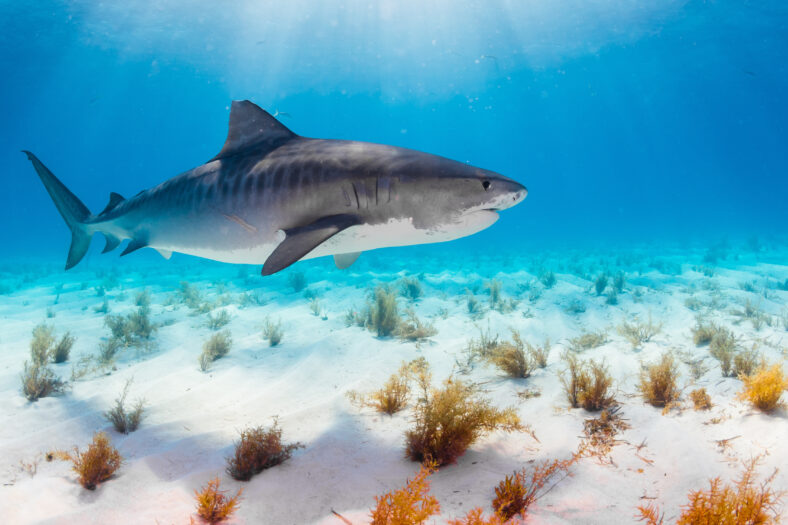One Of The Worst Shark Attacks In History Happened When The USS Indianapolis Was Sunk By Torpedoes

Shortly after midnight on July 30, 1945, toward the end of World War II, two Japanese torpedoes sunk the USS Indianapolis.
Of the 1,196 crew members onboard, 900 of them survived. However, the danger was just beginning. Many of the survivors became victims of one of the worst shark attacks in history.
When the war first started, the Indianapolis was conducting train exercises near Johnston Atoll. At that time, the Japanese attacked Pearl Harbor. Afterward, the Indianapolis joined Task Force 12 to search for the Japanese carriers behind the attack.
The ship went on to participate in several important campaigns. In March 1945, it was struck by a kamikaze aircraft and experienced severe damage.
Once it had undergone repairs, the USS Indianapolis was assigned with a covert mission. They had to deliver pieces of the atomic bomb to Tinian Island before the infamous bombing of Hiroshima and Nagasaki. Many of the crew members didn’t even know what they were transporting.
Within 10 days, from July 16, 1945 to July 26, they had traveled from San Francisco to Tinian and dropped off the cargo.
Then, the Indianapolis sailed to Guam and made their way to Leyte Gulf in the Philippines. It planned to meet up with the USS Idaho, but that never happened.
When Lieutenant Commander Mochitsura Hashimoto of Japan detected the Indianapolis, he launched six torpedoes.
Two of the torpedoes hit the ship, causing it to burst into flames and sink almost immediately. In just 12 minutes, the vessel was underwater, and nearly 300 crew members went down with it.

Sign up for Chip Chick’s newsletter and get stories like this delivered to your inbox.
The surviving 900 gathered on life rafts, and many of them were injured. The activity and the smell of blood attracted sharks to the scene.
They were likely oceanic whitetip sharks and tiger sharks. At first, they targeted the dead, but they soon came after the living.
“Every now and then, like lightning, [a shark] would come straight up and take a sailor and take him straight down,” said Loel Dean Cox, one of the USS Indianapolis shark attack survivors.
“One came up and took the sailor next to me. It was just somebody screaming, yelling, or getting bit.”
Because of the secretive nature of the Indianapolis’s mission, help did not come for a while. The surviving crew members spent four days and five nights on the rafts, staving off hunger, thirst, exposure, and sharks. Finally, on August 2, 1945, they were saved.
Lieutenant Wilbur C. Gwinn spotted a huge oil slick and then realized there were men in the water. From there, he made a report, and a rescue operation began.
A plane and seven rescue ships were dispatched to the scene, saving hundreds of men. But of the 1,196 men, only 316 remained alive.
The U.S. military blamed the ship’s captain, Charles B. McVay III, for failing to zigzag the ship to avoid danger. However, Hashimoto stated that zigzagging wouldn’t have done any good.
Still, McVay was convicted and took his own life in 1968, succumbing to the significant guilt he felt. In 2000, Congress exonerated him and determined that he was not to blame for the tragic incident.
More About:News





